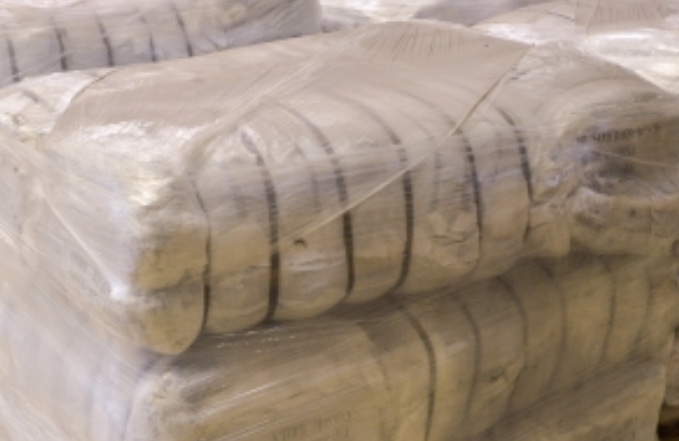Governor Kathy Hochul today announced commencement of construction for a major coastal-storm risk-management project led and fully funded by the U.S. Army Corps of Engineers, New York District, in partnership with New York State. The Fire Island to Montauk Point (FIMP) Project will reduce flood risk for Long Islanders along vulnerable areas of 83 miles of coastline in Suffolk County from Fire Island Inlet to Montauk Point. This comprehensive, $1.7 billion project includes a variety of features to reduce coastal flood risks.
“This project will safeguard Suffolk County communities from severe storms and sea level rise, essential for preserving Long Island’s treasured natural resources for future generations,” Governor Hochul said. “I applaud the sustained, collaborative work of State, Federal, and local partners in achieving this significant milestone, and I look forward to continue working together to protect Long Island’s coastline from the effects of extreme weather brought on by climate change.”
New York District Commander Colonel Matthew Luzzatto said, “Today is a great day for Long Islanders who have been waiting many years for a project of this magnitude to reduce flood risk to their property and communities. This project represents another step in the process of increasing coastal resiliency throughout our Area of Responsibility as we’ve done in multiple communities such as Coney Island, Long Beach, Fire Island to Montauk Inlet, and East Rockaway, where work is currently ongoing. The U.S. Army Corps of Engineers, New York District personnel, and our federal, state, and local partners are committed to executing this historic civil works initiative as we continue to work hand in hand to address the region’s toughest challenges.”
The New York State Department of Environmental Conservation (DEC) is the non-federal sponsor of the FIMP project, working with federal, state, and local partners to advance the necessary planning, design and implementation of this critical project to protecting Long Island’s coastal communities from storms and sea level rise. DEC experts have managed all state engineering and environmental reviews and permitting and will now continue to work with the USACE, Suffolk County, and the towns of East Hampton, Southampton, Brookhaven, Islip, and Babylon to ensure effective implementation of this historic project.
Department of Environmental Conservation Commissioner Basil Seggos said, “As the state partner in this decades-long, sustained effort to protect Long Island’s coastal communities, New York State DEC is working closely with the U.S. Army Corps of Engineers to reduce flood risks for Long Islanders. Year after year, our changing climate is driving an uptick in flooding and severe storms. To protect our communities and our natural resources, we must work together to increase resiliency, reduce climate-altering greenhouse gas emissions, and ramp up renewable energy sources. With strong federal, state, and local partners, we are better prepared to meet the challenges of our changing climate.”
The first part of the FIMP dredging project involves removing over 1.5 million cubic yards of sand from Fire Island Inlet and strategically placing it on updrift and downdrift beaches to reduce erosion and strengthen coastal resiliency. Approximately 802,000 cubic yards of sand will be placed along Gilgo Beach and 716,000 on Robert Moses State Park, respectively. This contract also includes the construction of coastal process features in Robert Moses State Park which are designed to enhance piping plover habitat.
The work is 100 percent federally funded under Public Law 113-2, the Emergency Supplemental Bill passed shortly after Superstorm Sandy. Major project elements include:
● Structure elevations and building retrofits for approximately 4,400 structures in areas subject to high-frequency flooding
● A four-pronged Breach Response Plan for barrier islands evaluating potential actions for breaches resulting from severe storms and tidal surges
● Beach and dune fill on shorefronts, with renourishment approximately every four years for up to 30 years after project completion
● Inlet bypassing at the federal navigation channels
● Removal of existing groins/jetties at Ocean Beach on Fire Island
● Feeder beach construction at Montauk Beach. (A feeder beach is an artificially widened beach that nourishes down-drift beaches)
● Coastal Process Features designed to replicate natural processes and enhance shorebird habitat
Historically, Long Island’s barrier islands and south shore mainland communities in Suffolk County have been battered by severe storms. In fact, The State of New York has been impacted by 84 tropical or subtropical cyclones since the 17th century. In addition to Superstorm Sandy in 2012 that eroded nearly 45 percent of beach sediment in some areas, the worst occurred during the 1930’s – before hurricanes were given names.
On September 21, 1938, a category 3 hurricane known as The Long Island Express unexpectedly came ashore, resulting in the deaths of dozens of people in eastern Suffolk County, mainly in Westhampton Beach. The storm also caused hundreds of fatalities as it swept through New England.
Over the years, the New York District has been restoring damaged areas of Suffolk County’s coastlines. Most recently, from 2014-19, the Fire Island Inlet to Moriches Inlet (FIMI) Project provided an expedited approach to construct a stabilization effort independent of FIMP. A one-time initial construction project to repair damages caused by Hurricane Sandy, seven million cubic yards of sand was placed on the shoreline and several miles of protective dunes were built.
The New York District will lead construction efforts in concert with the New York State Department of Environmental Conservation (NYSDEC), the non-federal sponsor, in cooperation with Suffolk County, the Towns of Babylon, Islip, Brookhaven, Southampton and Easthampton. The Army Corps will also work closely with the National Park Service (NPS), Fire Island National Seashore (FIIS) and the U.S. Fish and Wildlife Service (USFWS) ─ each are important partners ensuring protection of endangered species and environmental sensitivity along the Atlantic Ocean shoreline.
















